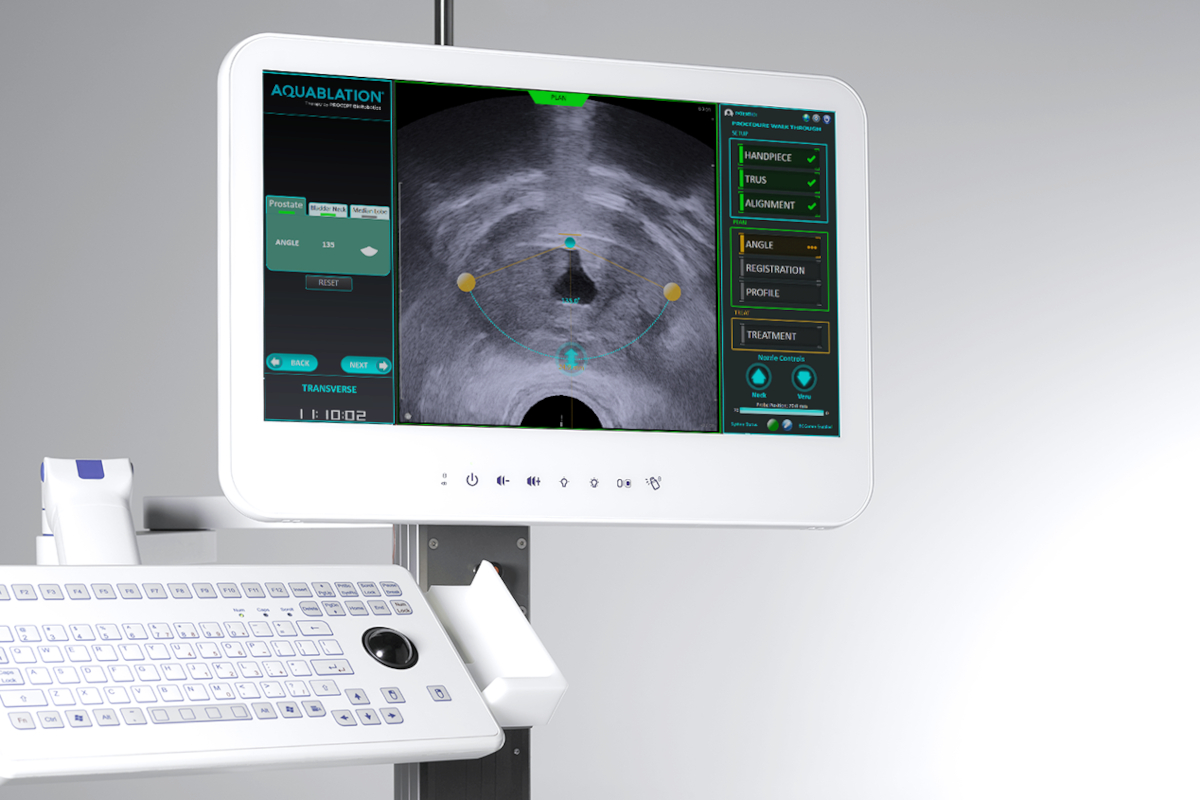Penn State Health offers innovative Aquablation therapy to treat enlarged prostate

Penn State Health is now offering a new, minimally invasive robotic surgical procedure at two of its hospitals to treat enlarged prostate, also known as benign prostate hyperplasia. Aquablation therapy is the first and only image-guided, heat-free robotic therapy for the treatment of the condition.
This advanced treatment is available at Penn State Health Milton S. Hershey Medical Center and Penn State Health Lancaster Medical Center — the only hospital in Lancaster County offering Aquablation therapy.
Aquablation’s AquaBeam Robotic System uses camera and ultrasound imaging combined with advanced planning software to provide a multidimensional view of the treatment area. This allows the surgeon to customize the treatment plan to the patient’s unique anatomy. Real-time monitoring throughout the procedure guides the precise removal of the obstructive prostate tissue with a heat-free water jet powered by the robotic technology. The whole procedure, done while the patient is under anesthesia, typically takes less than one hour.
“Aquablation is a terrific addition to our treatment options for patients with enlarged prostates,” said Dr. Jay Raman, chair of Urology and head of robotic surgery at Milton S. Hershey Medical Center. “It’s precise, consistent and predictable, and provides patients with long-term relief and no negative effects on sexual activity.”
Half of all men develop benign prostate hyperplasia by the time they’re 50 years old. Testosterone causes the walnut-sized gland to grow slowly and continuously — typically inward, compressing the base of the bladder as well as the urethra. Left untreated, the condition can cause significant health problems, including bladder stones and irreversible bladder or kidney damage, resulting in the need for a catheter or dialysis.
The U.S. Food and Drug Administration granted the AquaBeam Robotic System de novo clearance — a classification available for low- to moderate-risk medical devices — in 2017.
If you're having trouble accessing this content, or would like it in another format, please email Penn State Health Marketing & Communications.
